Which kite to choose for snowkiting?
Snowkiting is an exciting sport that combines flying kites with riding across a snowy landscape. It has gained popularity among lovers of adrenaline winter sports. The key to comfortable and safe snowkiting lies, among other things, in choosing the right kite. With different types and sizes available, choosing the right kite for your skill level, riding style and snow conditions is critical. This article aims to guide you through the process of choosing the ideal kite for your snow kiting adventures.
Kite construction
Before diving into the specifics, it is essential to understand the basic types of kites used in snowkiting:
Foil kites
These are kites made of light fabric and a bunch of string. The chambered kite has no fixed structure and its rvar is held thanks to the complex tying of the canopy. There are several types of chambered kites.
The open cell foil kites has an open leading edge and you can see into the chambers. This type is not suitable for water, because when it falls, water easily flows into it and then it cannot be restarted.
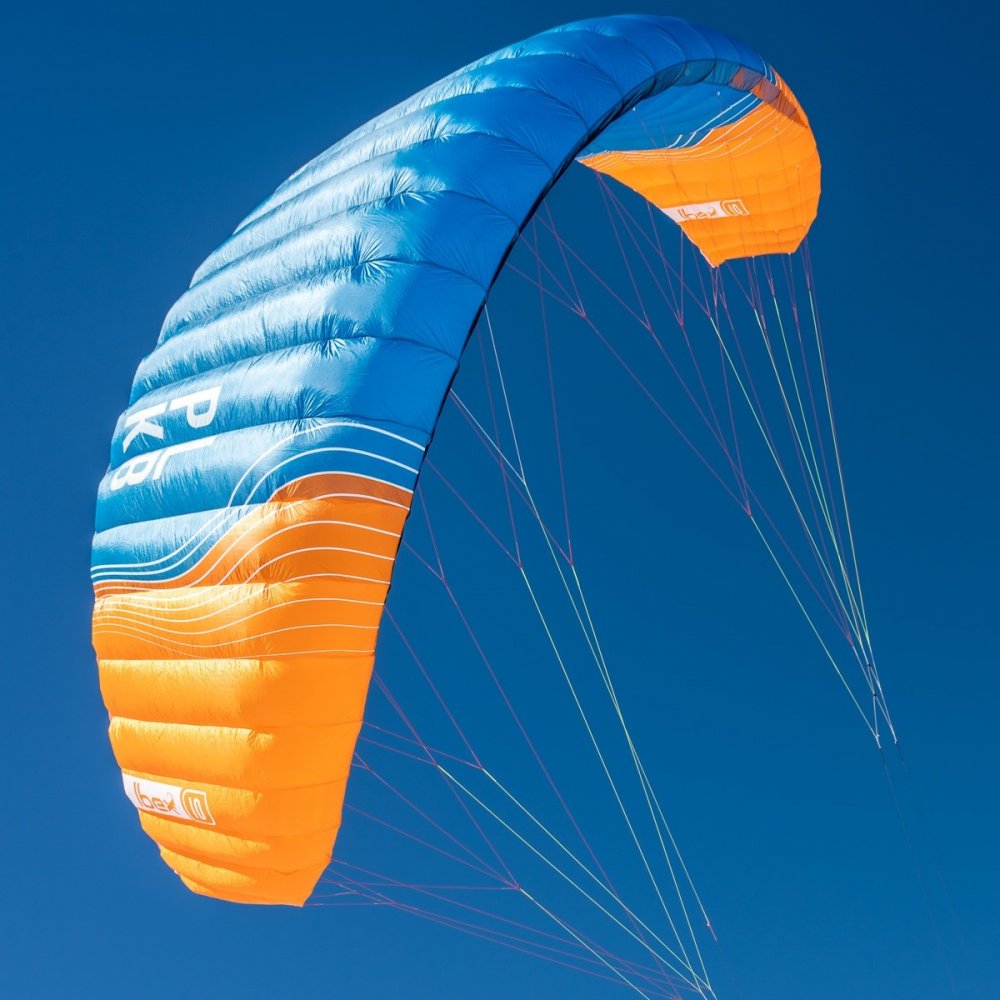
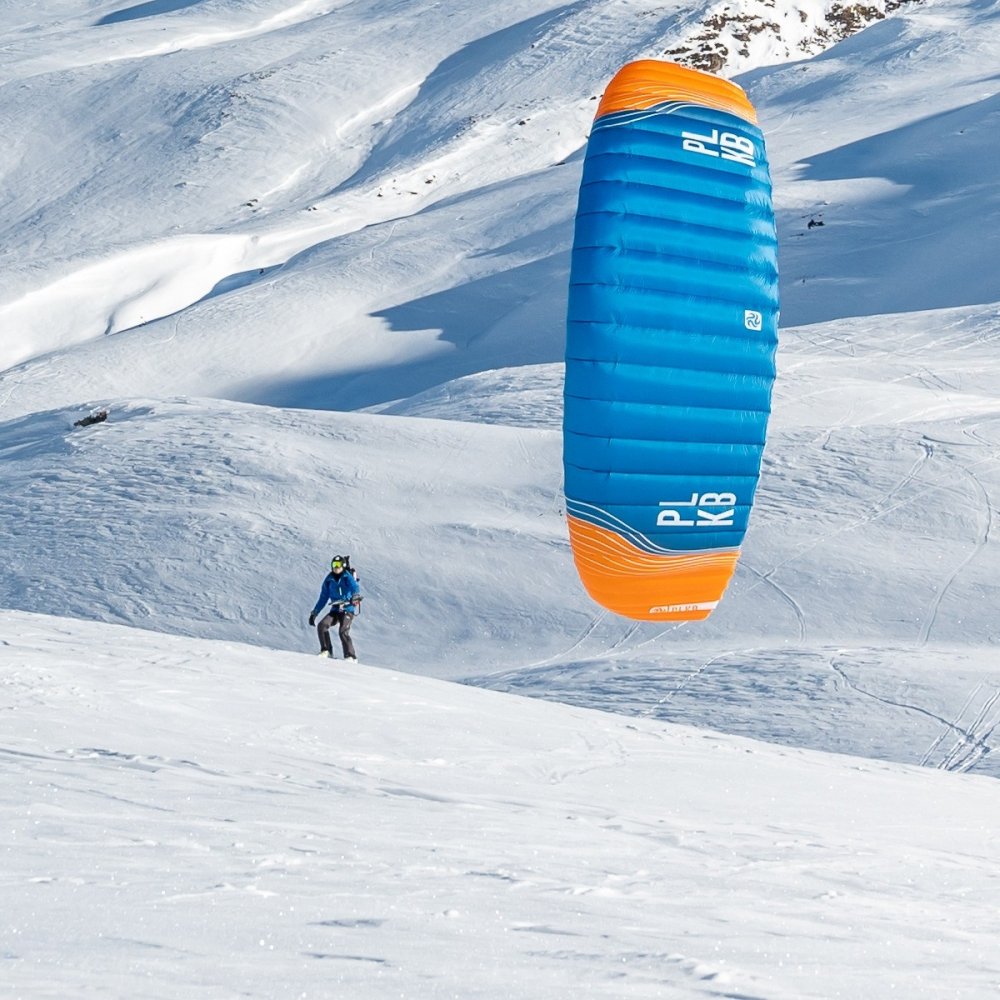
The closed cell foil kites has a closed leading edge, so it is difficult for water to get into it and can therefore also be used on water. These kites have a larger powerful streamlined profile so they can go fast and climb a lot against the wind. The disadvantage is the higher price and slightly more demanding handling when starting and landing when the kiter is alone and does not have an assistant to help.
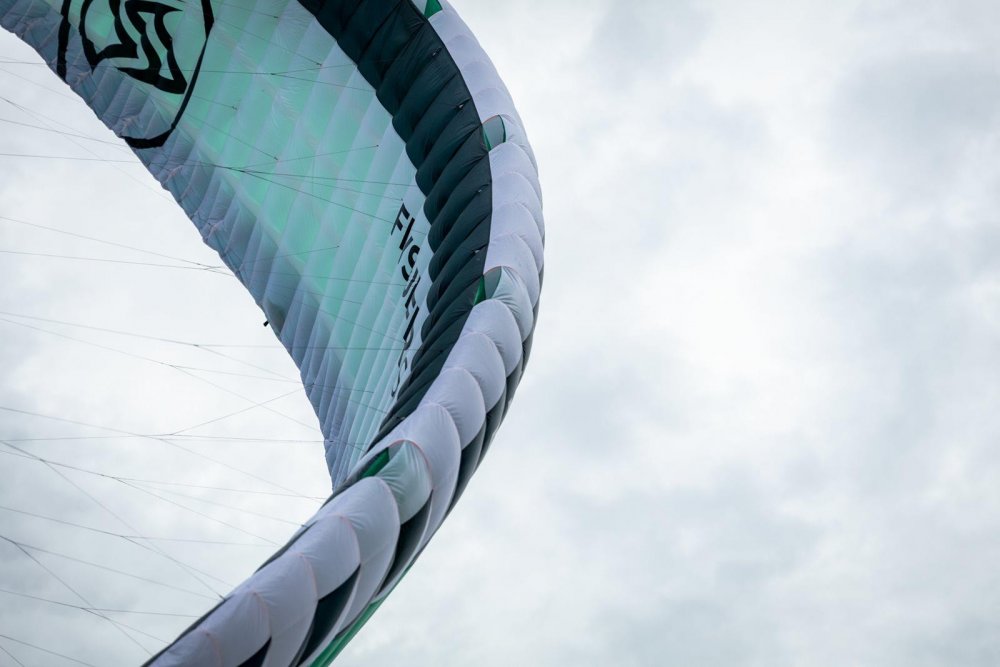
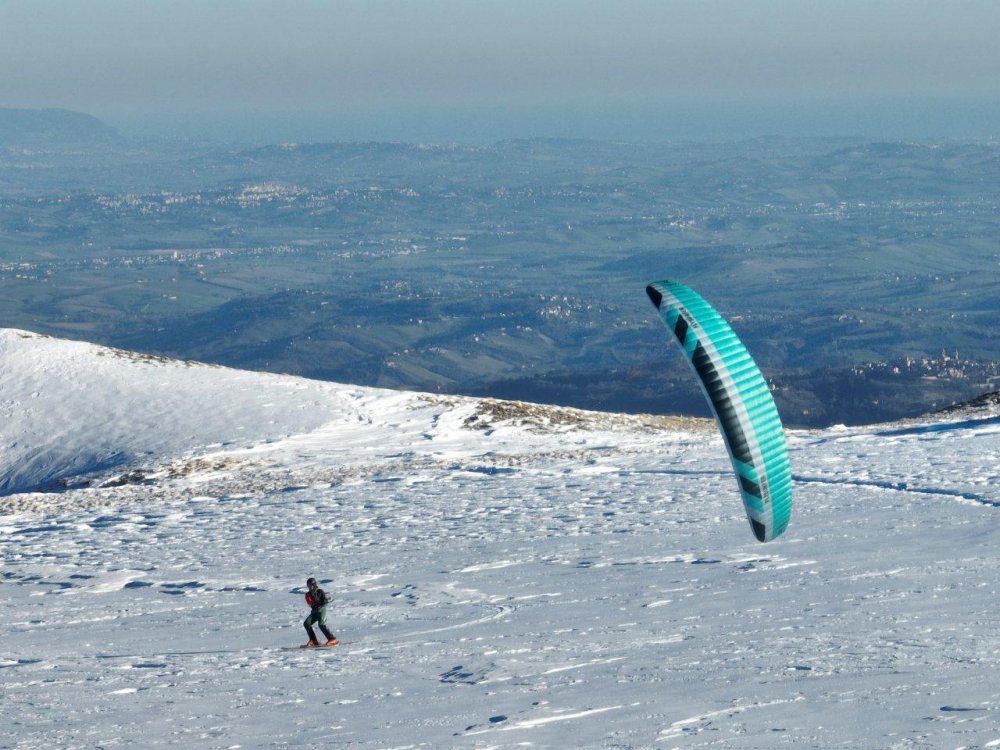
Single skin kites has only few or no cells. It has only one layer of sail. Not suitable for water due to heavy restarts. On dry land it has the advantage of easy handling and is very light, so it works perfectly even in light winds. In addition, it is very durable because it cannot tear apart due to overpressure when it hits the demo, like a closed and open chamber. Thanks to the smaller amount of material, it is also relatively cheap.
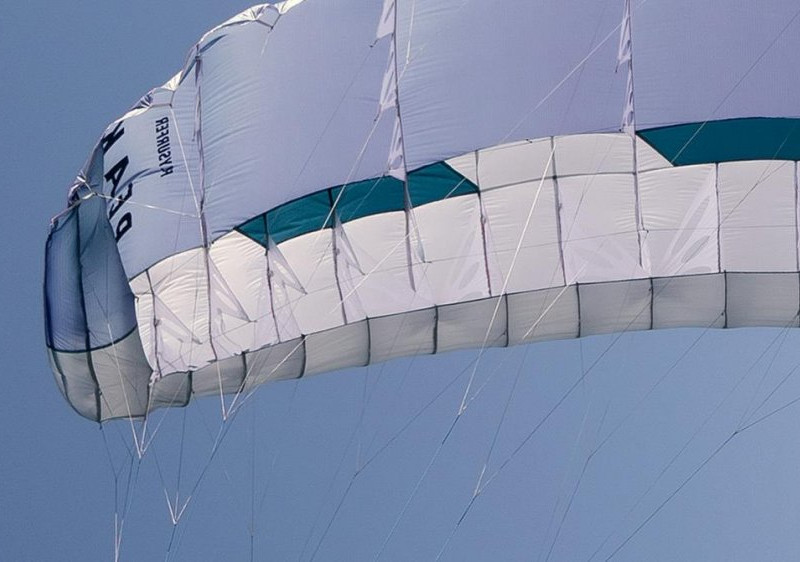
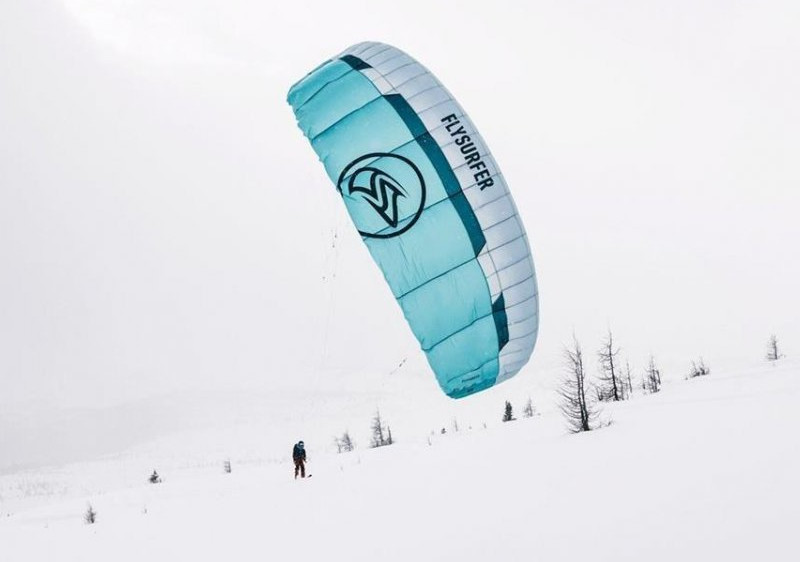
Hybrid construction combines the advantages of a closed chamber and single skins. It is very light, small when packed and can be used even on the water.
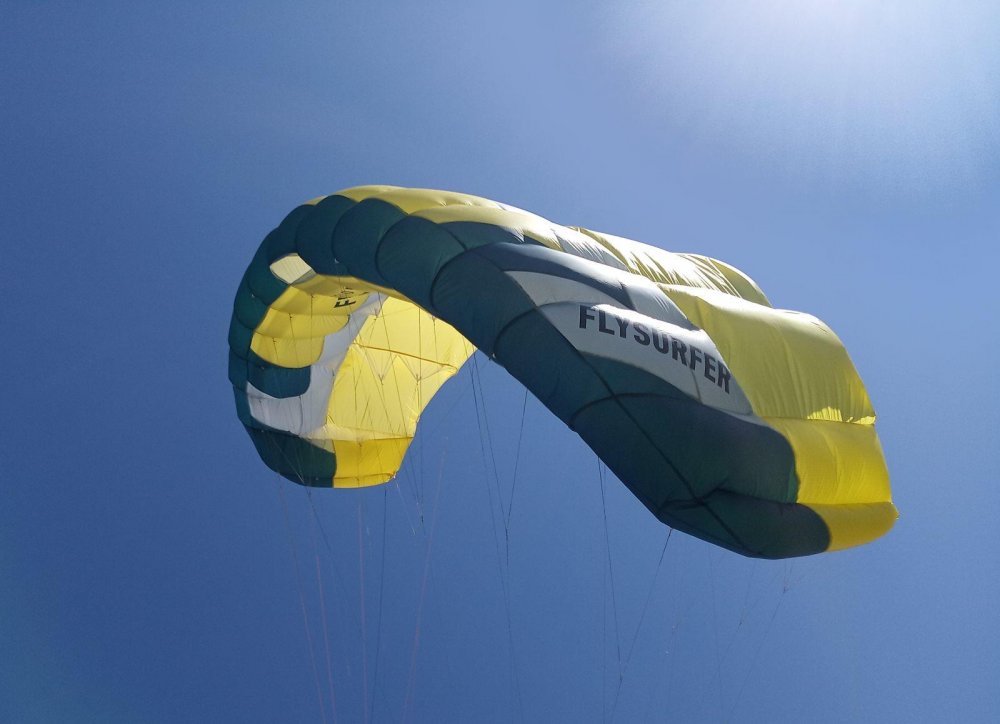
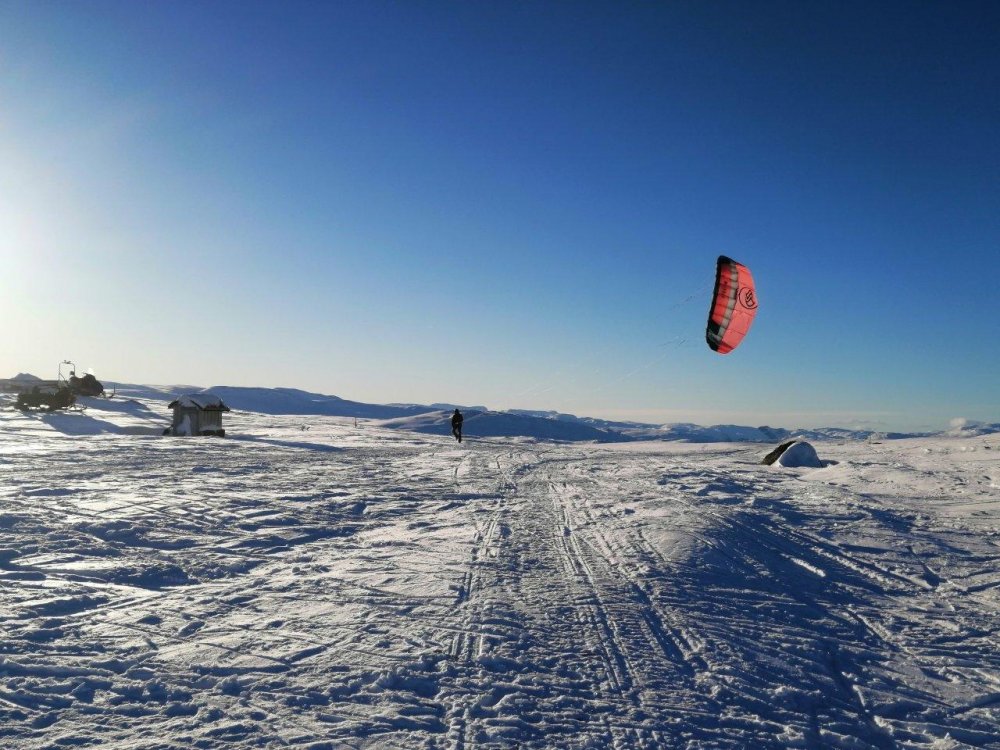
Inflatable kites
These are leading edge inflatable (LEI) kites. They have an inflatable leading edge and other stiffeners (spirals) that give them a rigid frame. This type of kite is mainly used on water because it is relatively easy to damage them when they fall to the ground on dry land. Their construction is also heavier, so they don't fly very well in very light winds. On the other hand, thanks to their thin construction, only a minimum of tying lines are needed, and the kite is very little tangled, even during falls. This can be a big advantage on the water for an inexperienced kiter.
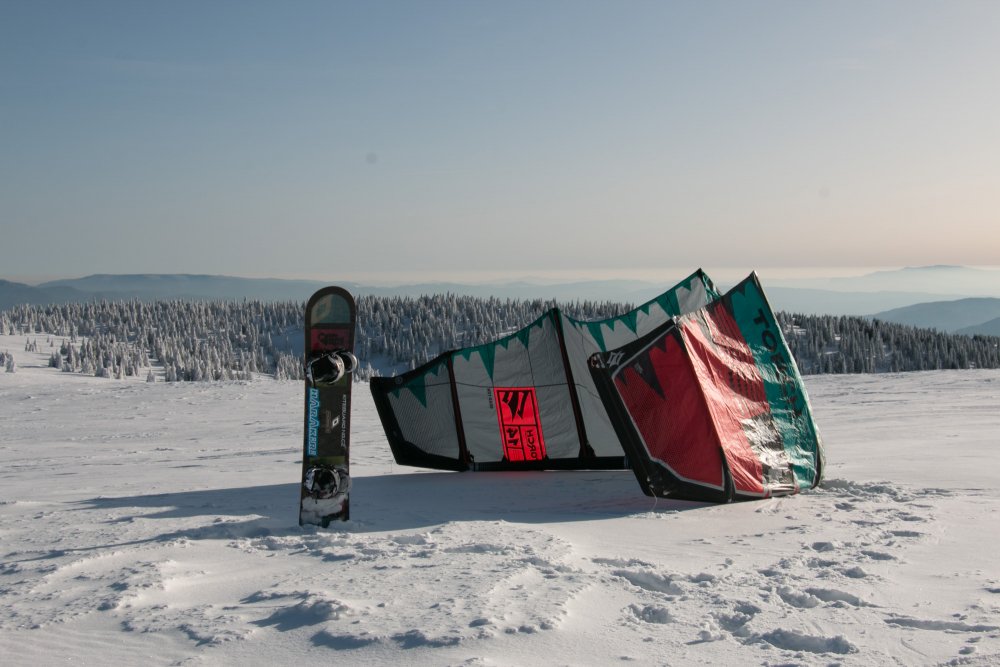
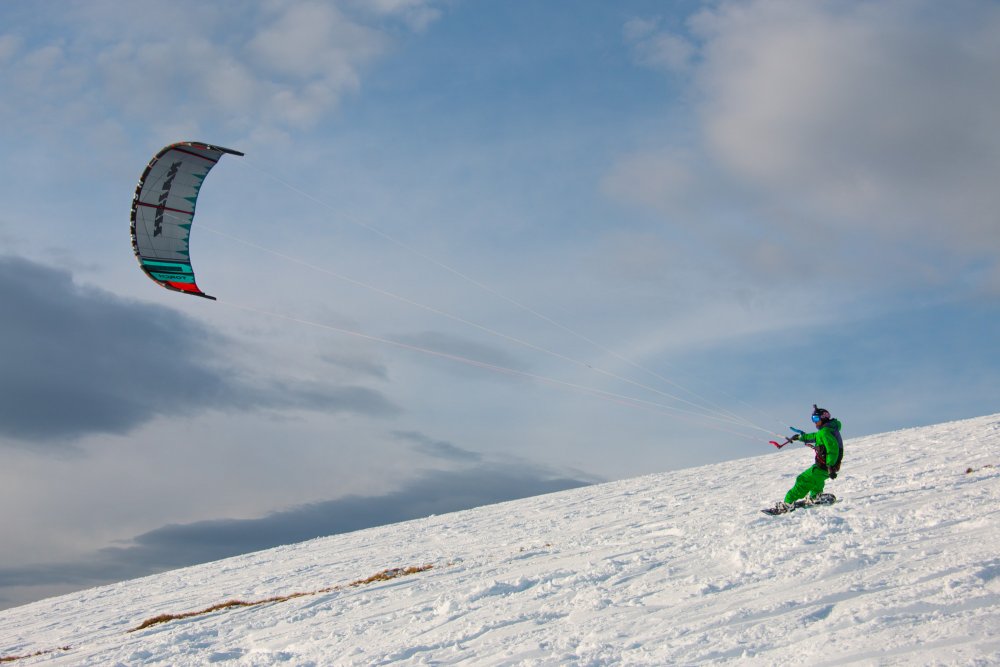
Skill level
Choosing the right kite also depends on your skill level. Beginners should opt for a kite that is easy to control, stable, calm and forgiving of mistakes. Across the range of kite constructions, it is possible to find kites focused on their features for both beginners and advanced kiters. With single skin and hybrid kites, however, we find a larger proportion of models that are suitable for less experienced kiters and are also ideal for snowkiting due to their characteristics.
Size matters
The size of the kite is a crucial factor in snowkiting. Larger kites generate more thrust and are suitable for lighter winds, while smaller kites are ideal for stronger winds. In general, beginners should start with a medium-sized kite that allows for a balance between performance, control and wind strength in which to fly them. When choosing the size of your kite, remember to consider the wind conditions of your preferred snowkiting location as well as your weight, as another kite will be handled by a 50kg girl and a 110kg guy.
Terrain and snow conditions
The type of snow and terrain you plan to ride also affects your kite selection. If you are exploring mountain areas with variable snow conditions, a versatile kite that performs well and safely in a variety of terrains and conditions is essential. The size and weight of the packed kite can also play a big role if you plan to carry it in your backpack on the ski alps.
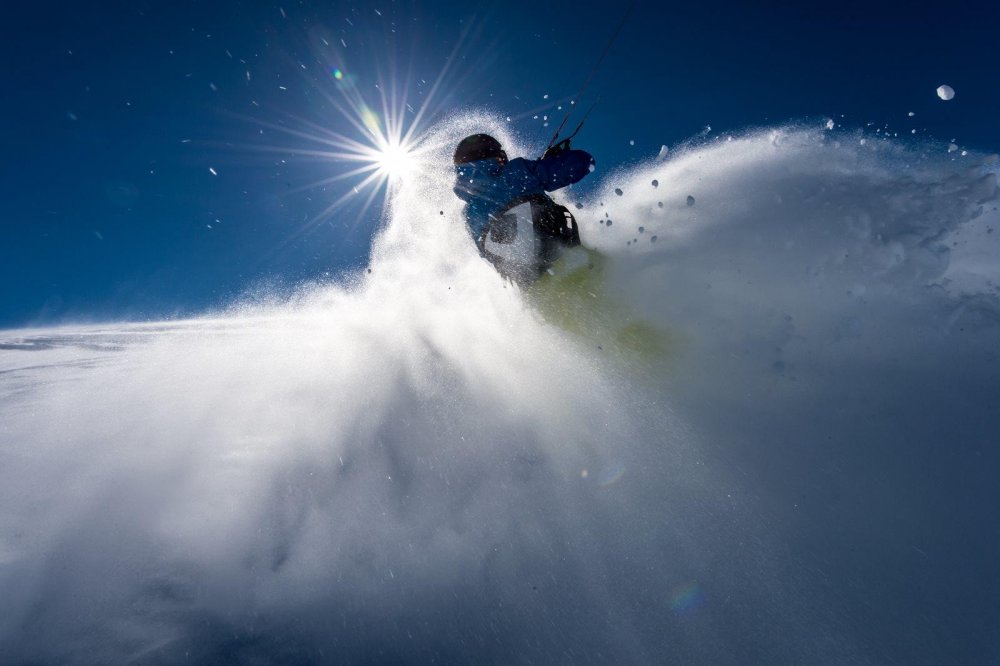
Safety features
Safety is paramount in any extreme sport and snowkiting is no exception. Look for kites with reliable safety features such as quick release systems and effective depower options. This ensures that you can control the power of the kite in challenging situations and reduce the risk of accidents. You can encounter malfunctioning safety systems especially with old kites or with kites that are poorly maintained.
Recommendation
If you are reading this article, you are probably a beginner or less experienced kiter, as the experienced ones usually already know this. It is very reasonable to get advice from someone very experienced when choosing a kite, whether it is a friend who has been kitesurfing intensively for many years, an experienced team rider, or a kite instructor. A beginner can get a basic idea of the equipment on a snowkite course, where he can touch a few kites and see what kites the school uses on the courses (In most cases, these will be kites that are safe, suitable for beginners and at the same time affordable.)
Conclusion
Choosing the right kite for snowkiting is a personalized process that depends on many factors, including skill level, weight preferences of the kiter, and snow conditions. Whether you are a beginner or an experienced rider, taking the time to understand the characteristics of different kites and consider your specific needs will contribute to a safer and more enjoyable snowkiting experience. Always prioritize safety, invest in quality gear (not necessarily brand new), and most of all, have fun exploring the winter landscape with the wind as your ally.
Ciao on the snow, Leguan
Survey
Which kite is best for you for snowkiting?




Discussion